- Home
- Susan Hill
A Question of Identity (Simon Serrailler 7)
A Question of Identity (Simon Serrailler 7) Read online
Contents
Cover
About the Book
About the Author
Also by Susan Hill
Dedication
Title Page
Part One
Chapter One
Part Two
Chapter Two
Chapter Three
Chapter Four
Chapter Five
Chapter Six
Chapter Seven
Chapter Eight
Chapter Nine
Chapter Ten
Chapter Eleven
Chapter Twelve
Chapter Thirteen
Chapter Fourteen
Chapter Fifteen
Chapter Sixteen
Chapter Seventeen
Chapter Eighteen
Chapter Nineteen
Chapter Twenty
Chapter Twenty-one
Chapter Twenty-two
Chapter Twenty-three
Chapter Twenty-four
Chapter Twenty-five
Chapter Twenty-six
Chapter Twenty-seven
Chapter Twenty-eight
Chapter Twenty-nine
Chapter Thirty
Chapter Thirty-one
Chapter Thirty-two
Chapter Thirty-three
Chapter Thirty-four
Chapter Thirty-five
Chapter Thirty-six
Chapter Thirty-seven
Chapter Thirty-eight
Chapter Thirty-nine
Chapter Forty
Chapter Forty-one
Chapter Forty-two
Chapter Forty-three
Chapter Forty-four
Chapter Forty-five
Chapter Forty-six
Chapter Forty-seven
Chapter Forty-eight
Chapter Forty-nine
Chapter Fifty
Chapter Fifty-one
Chapter Fifty-two
Chapter Fifty-three
Chapter Fifty-four
Chapter Fifty-five
Chapter Fifty-six
Chapter Fifty-seven
Chapter Fifty-eight
Chapter Fifty-nine
Chapter Sixty
Chapter Sixty-one
Chapter Sixty-two
Chapter Sixty-three
Chapter Sixty-four
Chapter Sixty-five
Chapter Sixty-six
Acknowledgements
Copyright
About the Book
How do you find a killer who doesn’t exist?
Duchess of Cornwall Close: sheltered accommodation, a mix of bungalows and flats, newly built and not quite finished. Despite the bitterly cold weather, elderly residents are moving in. They don’t notice the figure in the shadows. Someone who doesn’t mind the cold.
Then, one snowy night, an old lady is murdered – dragged from her bed and strangled with a length of flex.
DCS Simon Serrailler and his team desperately search for a match, aware that the killer will strike again. But when they track down a name – Alan Keyes – they can find no birth certificate, no address, no job, no family, no passport, no dental records. Nothing. Alan Keyes does not exist.
About the Author
Susan Hill is the author of over fifty books, including the six previous Serrailler crime novels: The Various Haunts of Men, The Pure in Heart, The Risk of Darkness, The Vows of Silence, The Shadows in the Street and The Betrayal of Trust. The play of her famous ghost story, The Woman in Black, has been running in the West End since 1989 and is now a major film starring Daniel Radcliffe.
BY THE SAME AUTHOR
The Simon Serrailler Crime Novels
THE VARIOUS HAUNTS OF MEN
THE PURE IN HEART
THE RISK OF DARKNESS
THE VOWS OF SILENCE
THE SHADOWS IN THE STREET
THE BETRAYAL OF TRUST
Fiction
GENTLEMAN AND LADIES
A CHANGE FOR THE BETTER
I’M THE KING OF THE CASTLE
THE ALBATROSS AND OTHER STORIES
STRANGE MEETING
THE BIRD OF NIGHT
A BIT OF SINGING AND DANCING
IN THE SPRINGTIME OF THE YEAR
THE WOMAN IN BLACK
MRS DE WINTER
THE MIST IN THE MIRROR
AIR AND ANGELS
THE SERVICE OF CLOUDS
THE BOY WHO TAUGHT THE BEEKEEPER TO READ
THE MAN IN THE PICTURE
THE BEACON
THE SMALL HAND
A KIND MAN
Non-Fiction
THE MAGIC APPLE TREE
FAMILY
HOWARDS END IS ON THE LANDING
For Children
THE BATTLE FOR GULLYWITH
THE GLASS ANGELS
CAN IT BE TRUE?
For LGHR
30 May 2012
A Question of Identity
A Simon Serrailler Crime Novel
Susan Hill
PART ONE
YORKSHIRE, 2002
It’s like your brain’s bursting. It doesn’t happen all at once, it builds up. And then your brain’s going to burst until you do something about it. You do it. You have to do it. Then it’s all right again for a bit, ’til it starts again.
One
20 MAY, 2002
‘MEMBERS OF THE jury, the defendant has answered an indictment containing three counts. On count one he is charged with murder. The particulars of the offence are that on or before the seventeenth day of July 2001, he murdered Carrie Millicent Gage. On count two he is charged with murder. The particulars of the offence are that on or before the thirtieth of July 2001, he murdered Sarah Pearce. On count three he is charged with murder. The particulars of the offence are that on the fourth of August 2001 he murdered Angela Daphne Kavanagh.
‘To each count he has pleaded “Not guilty”, and it is your duty, having heard the evidence, to say, in respect of each count, whether he is guilty or not.
‘Would the defendant please stand?’
Alan Frederick Keyes, thirty-two, a self-employed builder of 33 Westway Road, Crofton – wearing dark trousers and a blue open-necked shirt – stood.
23 MAY, 2002
‘Would the next witness please take the stand?’
A small woman. Brown coat, beige felt hat. She looked frail, walked slowly, as if in some pain, eyes huge in a bony little face darting about the court, skin the colour of an old candle.
‘Will you please state your name?’
She leaned on the wooden ledge of the witness box, eyes still fearful, catching her breath.
‘When you’re ready.’
Silence. She looked down in panic at the clerk.
‘Are you feeling unwell?’
His Honour Judge Malcolm Palmer, notoriously kind to witnesses, relatives, court attendants, women and babies. Notoriously harsh to prosecution or defence not on top of their game, cocky police officers, unprepared expert witnesses and members of the press.
But she pulled herself up. Shook her head, looking anxiously at the judge, who gave her his best encouraging smile. Satisfied that she was ready to attest, he nodded at the clerk.
‘Will you please state your name?’
‘Gwendolyn Violet Phipps. Mrs.’
‘You must speak up a little so that the jury can hear you. Would you mind saying it again?’
‘I’m sorry, I’m . . .’
‘That’s quite all right. Just once again, please.’
Pause. She cleared her throat. Spoke up loudly. ‘My name is Gwendolyn Violet Phipps. Mrs.’
‘Thank you, Mrs Phipps, that was perfect.’
&nb
sp; Mr Anthony Elrod, for the Prosecution: ‘Mrs Phipps, would you tell the court please where you were on the night of 17 July last year – 2001?’
‘Well, I was at home . . .’
‘And your home is?’
‘Number 8 Meadow View Close – the bungalows. I was in bed, only then . . . I heard something . . . and I got up.’
‘Can you explain to the court where exactly your bungalow, number 8, Meadow View Close is, in relation to the bungalow in which Mrs Carrie Gage lived?’
‘Opposite. Right opposite, across the grass.’
‘So you have an unobstructed view of number 20?’
‘Oh yes. Very clear. I could see Carrie – Mrs Gage – when she was alive . . . I could see her going in and out or if she was at her front window . . . and she could see me. The same.’
‘Quite. Now, on the night of 17 July, you say you were awakened by a noise?’
‘No, I didn’t say that. No. I said I heard something . . . I didn’t say it was a noise, or that I was asleep.’
‘Well, whatever it was, what did you do?’
‘I got up. I knew it wouldn’t do any good just lying there. I got up to make a cup of tea.’
‘Did you put a light on straight away?’
‘No, I went to my bedroom window and looked out.’
‘Why was that? Wouldn’t the first thing anyone would do would be to switch –’
Mr Jeremy Brockyear, for the Defence, getting to his feet: ‘Your Honour –’
Judge Palmer: ‘Yes. Mr Elrod, this is very elementary you know, you are trying to ascertain what the witness and only the witness would do, she cannot know what “anyone” else would have done.’
‘I beg your pardon, Your Honour. Mrs Phipps, why didn’t you put a light on immediately?’
‘I must have wondered what had disturbed me and gone to look out first . . . if there had been someone out there, I always think it’s safer to see and not be seen, if you follow. If I’d switched on a light whoever it was could have seen me and then what?’
‘So you were disturbed by a person making some sort of noise?’
‘I must have been. Well, obviously, after I saw him, I realised that, didn’t I?’
‘“After I saw him”? Who or what was it you did see, Mrs Phipps?’
‘The man.’
‘One man?’
‘Yes, one. Only one.’
‘Will you describe the man for us please?’
‘Well, it was the man I saw in that line of them, the one I pointed to.’
‘That would be in the identification parade at the police station?’
Judge Palmer: ‘A step too far ahead, Mr Elrod.’
‘Yes, Your Honour. Mrs Phipps, just let’s go back to the night on which you say you saw a man outside number 20 Meadow View Close . . . Was it a dark night? Was there a moon?’
‘It was dark, but there’s a security light, that came on. They come on when anyone moves, only sometimes it’s a nuisance, a stray cat or those bloomin’ foxes run past and it goes on.’
‘Did you see a cat or a fox?’
‘No.’
‘But you saw a man.’
‘Yes, I definitely did.’
‘Did you recognise him?’
‘Well, I said before, it was the one I –’
‘We’ll come to that in a moment, Mrs Phipps. Did you recognise him when you looked out of the window that night and saw him? Was it someone you knew?’
‘I don’t think I knew him. No, I didn’t.’
‘Are you quite sure?’
‘I think I am, yes. Only it was dark of course.’
‘Except for the security light that came on, and in which you could see the figure of a man?’
‘Yes.’
‘Thank you. So now let us move on to the afternoon of 14 October when you attended Crofton Central Police Station. You were shown photographs of a number of men.’
‘A lot of photographs. It was quite confusing actually.’
‘Did you recognise any of them as being the man you saw that night, outside Mrs Gage’s bungalow?’
‘Not really. They were photographs of faces close up and I didn’t see him like that.’
‘Quite. You saw him across the grass from your own window. Let us now move on to 4 November, when you went to Crofton Central Police Station again, and this time you looked at an identity line-up of eight men. You saw them standing, not just their faces. Now did you recognise any of them as being the man you saw on that night from your window?’
‘Oh yes. I recognised him.’
‘You recognised the defendant?’
‘Yes.’
‘You’re quite sure about that?’
‘I was . . . I thought it was him. The others weren’t anything like him. Well, not much anyway. No, it must have been him.’
‘Thank you, Mrs Phipps. No more questions, Your Honour.’
Mr Jeremy Brockyear, for the Defence: ‘Mrs Phipps, do you wear glasses?’
‘Yes. For reading and sewing.’
‘So, you’re long-sighted. You have no problems with distance vision?’
‘No. I’m very fortunate in that regard.’
‘How far can you see clearly without any blurring of vision? Ten yards? Twenty-five yards? One hundred –’
Mr Anthony Elrod: ‘Objection, Your Honour – the witness can hardly be expected to know the exact measurements of how far she can see.’
Judge Palmer: ‘Point taken but most people have a general idea of their visual extent.’
Mr Jeremy Brockyear: ‘Do you drive a car, Mrs Phipps?’
‘I did, only I gave it up when I moved into Meadow View.’
‘Because you could no longer see clearly?’
‘No, because I could no longer afford the running of it.’
‘Well, the distance it is necessary to read a number plate clearly, in order to pass the driving test is 25 yards, with glasses if worn. How long is it exactly since you last possessed a driving licence?’
‘Seven . . . no, nearly eight years.’
‘And do you think you could still see well enough to pass the driving test?’
Mr Anthony Elrod: ‘Your Honour . . .’
Judge Palmer: ‘Yes. Mr Brockyear, you cannot ask the witness to speculate in that way.’
‘Mrs Phipps, will you please tell the court, in as much detail as you can, what or who you saw exactly when you looked out of your window that night?’
‘A man. It was definitely a man. That man.’
‘How can you be so sure of that?’
‘I . . . well, I think . . . no, I mean, I just know. It wasn’t quite dark and it isn’t far across the grass. I might have seen his reflection in the window.’
‘In which window?’
‘The one opposite mine, number 20. Carrie’s window.’
‘Are you saying you definitely did see this man’s reflection?’
‘I think I might have, yes.’
‘But you cannot be absolutely sure? Mrs Phipps?’
‘I don’t know . . . I’m saying . . . well, I don’t know how else I’d have seen him, is what I’m saying.’
‘Might you have been mistaken?’
‘No. I saw something.’
‘Something or someone? Something, as in an animal, or even a shadow – perhaps a tree threw its shadow across the grass?’
Judge Palmer: ‘Take your time, Mrs Phipps. Remember you are under oath. You must be sure about what you remember and if you aren’t sure you must say so. Do you understand?’
‘I do, but it’s – it’s quite confusing.’
Mr Jeremy Brockyear: ‘Mrs Palmer, did you see a man standing in the garden on that night?’
‘Yes.’
‘You are quite sure.’
‘I was sure.’
‘You were sure or you are sure? You see, what I think happened is that you saw something . . . and possibly it was indeed someone. Possibly it was a man . . . but a few minutes ago you said
it was almost dark. You’re quite correct. There was indeed no moon that night. There was heavy cloud. Behind it, the moon was only one day from new. It would not have been visible behind such cloud. So in fact it was pretty dark in the garden when you looked out, wasn’t it?’
‘Yes, but I saw someone. I definitely saw – well, I saw something, anyway.’
‘But you’re not sure it was a person at all, let alone a man?’
‘You’re making me think I’m not. But the light came on. The security light.’
‘You’re sure it did?’
‘It must have done, mustn’t it? It always comes on when something moves and I saw the man, so he must have moved and then the light came on.’
‘Now I think we are all confused. Mrs Phipps, I’m trying to get you to be absolutely sure, and it seems to me that the more you think about this extremely important incident, the less sure you are. But let’s leave the garden and move on to the identity parade at the police station. At this parade you picked out one man as being the man you are certain you saw that night, didn’t you?’
‘I suppose I did.’
‘Did you or didn’t you?’
‘I feel . . . I don’t know. I just don’t know anything, you’ve confused me so much.’
‘I’m sorry if that’s how you see it because I am not trying to confuse you in any way. On the contrary, I am trying to get at the truth. I am trying to be clear and to make sure you yourself are clear, about what or who you saw that night. And you’re not sure, are you? About what you saw –’
‘I am sure about that. I was and I am. It was a man. I saw a man.’
‘So now let us again move to the identity parade at the police station.’
‘They confused me there too.’
‘Who confused you?’
‘The detective. The policeman. One of them, maybe the other . . . the woman detective.’
‘Mrs Phipps, we need to be absolutely sure about this. Are you saying that one or possibly two members of the police “confused” you during the identity parade? How exactly did you feel they were confusing you?’
‘It wasn’t confusing me so much as . . . I don’t know . . . pushing me. Making me say it was him.’
‘The defendant?’
‘Yes. I looked at them all and at first I didn’t recognise any of them, I’d never seen any of them before. But then I looked again and I really did think it was him – the one in the . . . that man. And they sort of hurried me . . . I felt they . . . oh, I don’t know. I’m sorry.’

 Mrs De Winter
Mrs De Winter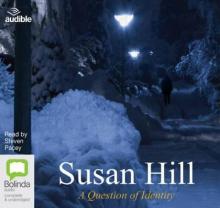 A Question of Identity
A Question of Identity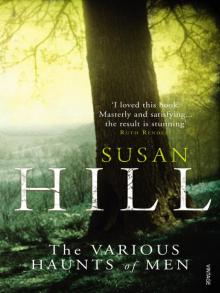 The Various Haunts of Men
The Various Haunts of Men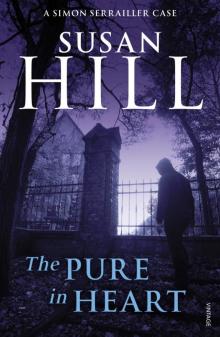 The Pure in Heart
The Pure in Heart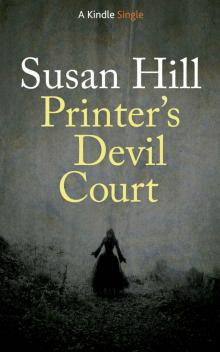 Printer's Devil Court
Printer's Devil Court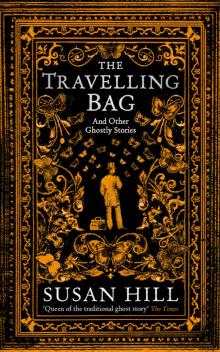 The Travelling Bag
The Travelling Bag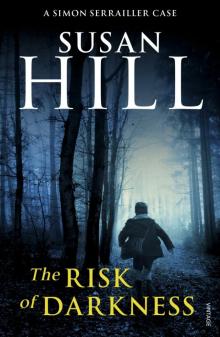 The Risk of Darkness
The Risk of Darkness A Kind Man
A Kind Man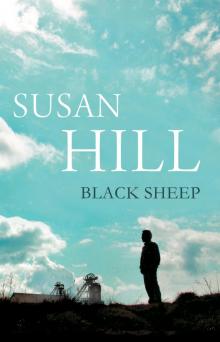 Black Sheep
Black Sheep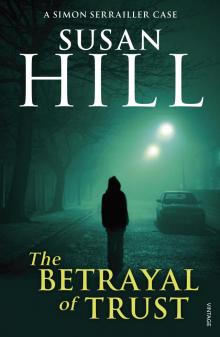 The Betrayal of Trust
The Betrayal of Trust The Service of Clouds
The Service of Clouds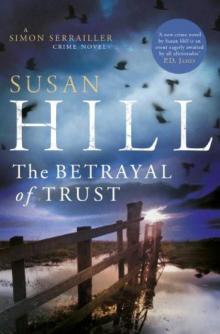 Betrayal of Trust
Betrayal of Trust The Small Hand
The Small Hand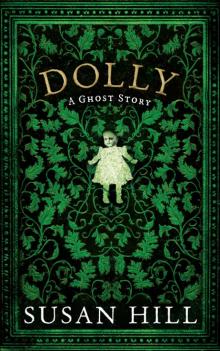 Dolly
Dolly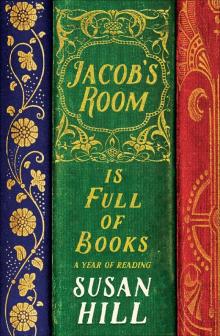 Jacob's Room Is Full of Books: A Year of Reading
Jacob's Room Is Full of Books: A Year of Reading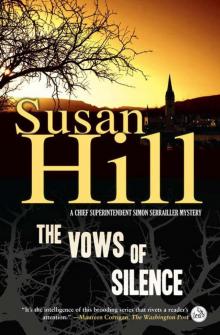 The Vows of Silence
The Vows of Silence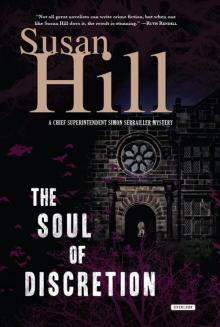 The Soul of Discretion
The Soul of Discretion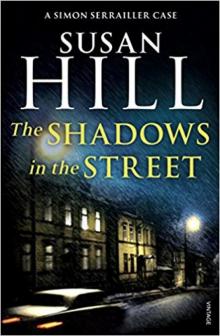 The Shadows in the Street
The Shadows in the Street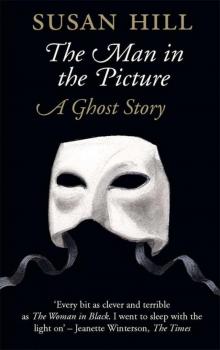 The Man in the Picture
The Man in the Picture Air and Angels
Air and Angels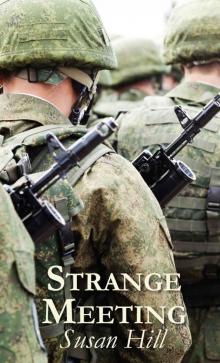 Strange Meeting
Strange Meeting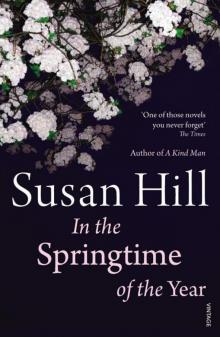 In the Springtime of the Year
In the Springtime of the Year Howards End Is on the Landing: A Year of Reading From Home
Howards End Is on the Landing: A Year of Reading From Home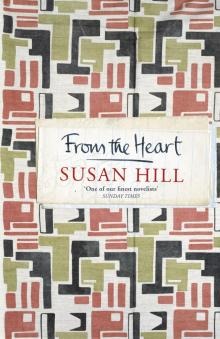 From the Heart
From the Heart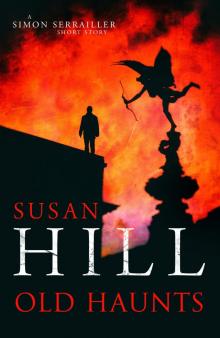 Old Haunts
Old Haunts The Mist in the Mirror
The Mist in the Mirror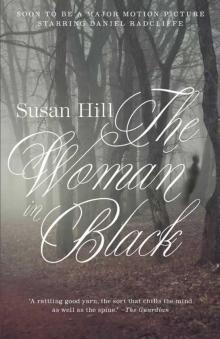 The Woman in Black: A Ghost Story
The Woman in Black: A Ghost Story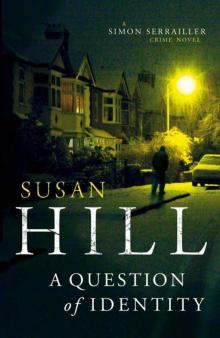 A Question of Identity (Simon Serrailler 7)
A Question of Identity (Simon Serrailler 7)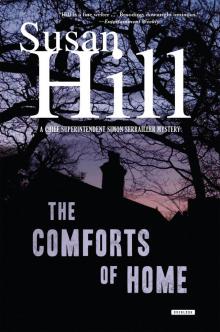 The Comforts of Home
The Comforts of Home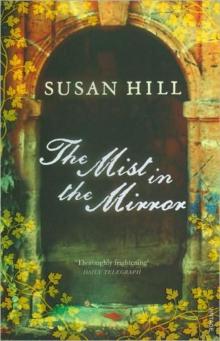 Mist in the Mirror
Mist in the Mirror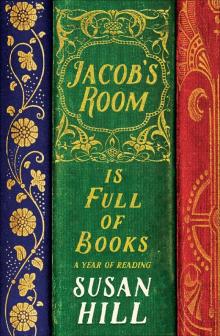 Jacob's Room is Full of Books
Jacob's Room is Full of Books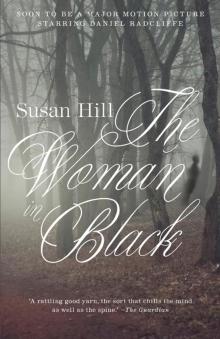 The Woman in Black
The Woman in Black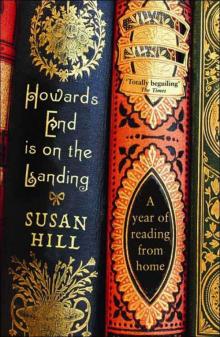 Howards End is on the Landing
Howards End is on the Landing